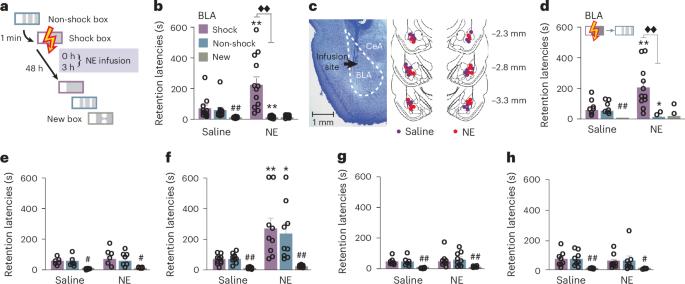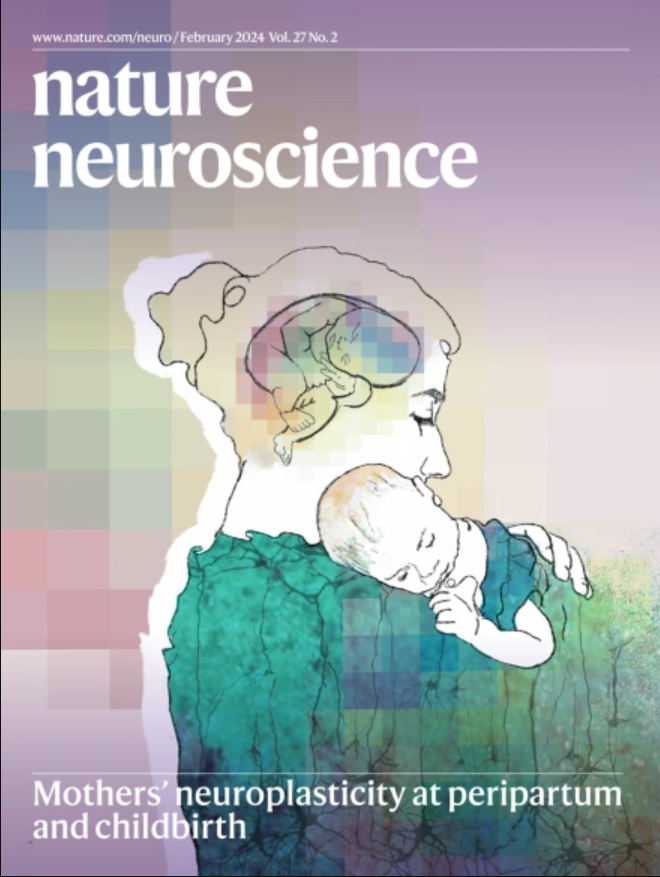基底外侧杏仁核的去肾上腺素能激活促进了对时间相近的类似事件的记忆特异性
IF 20
1区 医学
Q1 NEUROSCIENCES
引用次数: 0
摘要
基底外侧杏仁核(BLA)的去肾上腺素能激活促进强烈和持久的情感唤起经历的记忆。然而,在我们的生活中,我们经常会遇到类似的事件,这些事件可能会使人困惑,并导致不正确的联想在情感上得到加强。在这里,我们提供了证据,在大鼠中,BLA的去甲肾上腺素能激活通过海马齿状回内mir -134调节的巩固过程,促进了时间相近的类似事件的离散记忆的形成。海马中miR-134的靶向下调足以诱导记忆特异性,而不影响记忆的强度。值得注意的是,BLA的去甲肾上腺素能激活并没有招募海马mir -134介导的机制来增强单一事件的记忆。这些发现表明,在“需要”的基础上,BLA采用了一种质量不同的神经机制来促进相似记忆表征的分离,从而能够选择性地加强正确关联到长期记忆中。本文章由计算机程序翻译,如有差异,请以英文原文为准。


Noradrenergic activation of the basolateral amygdala facilitates memory specificity for similar events experienced close in time
Noradrenergic activation of the basolateral amygdala (BLA) promotes strong and lasting memories of emotionally arousing experiences. However, in our lives, we often encounter similar events that may be confused and result in emotional strengthening of incorrect associations. Here we provide evidence, in rats, that noradrenergic activation of the BLA promotes the formation of discrete memories of similar events that were experienced close in time, via a miR-134-regulated consolidation process within the dentate gyrus of the hippocampus. Targeted downregulation of miR-134 in the hippocampus was sufficient to induce memory specificity, without affecting the strength of the memory. Notably, noradrenergic activation of the BLA did not recruit this hippocampal miR-134-mediated mechanism in enhancing memory of a single event. These findings indicate that the BLA engages a qualitatively different neural mechanism on an ‘as-needed’ basis to facilitate the separation of similar memory representations, enabling the selective strengthening of correct associations into long-term memory. Atucha et al. provide evidence that noradrenergic activation of the basolateral amygdala facilitates the formation of discrete memories of similar events experienced close in time via a miR-134-regulated consolidation process within the hippocampus.
求助全文
通过发布文献求助,成功后即可免费获取论文全文。
去求助
来源期刊

Nature neuroscience
医学-神经科学
CiteScore
38.60
自引率
1.20%
发文量
212
审稿时长
1 months
期刊介绍:
Nature Neuroscience, a multidisciplinary journal, publishes papers of the utmost quality and significance across all realms of neuroscience. The editors welcome contributions spanning molecular, cellular, systems, and cognitive neuroscience, along with psychophysics, computational modeling, and nervous system disorders. While no area is off-limits, studies offering fundamental insights into nervous system function receive priority.
The journal offers high visibility to both readers and authors, fostering interdisciplinary communication and accessibility to a broad audience. It maintains high standards of copy editing and production, rigorous peer review, rapid publication, and operates independently from academic societies and other vested interests.
In addition to primary research, Nature Neuroscience features news and views, reviews, editorials, commentaries, perspectives, book reviews, and correspondence, aiming to serve as the voice of the global neuroscience community.
 求助内容:
求助内容: 应助结果提醒方式:
应助结果提醒方式:


